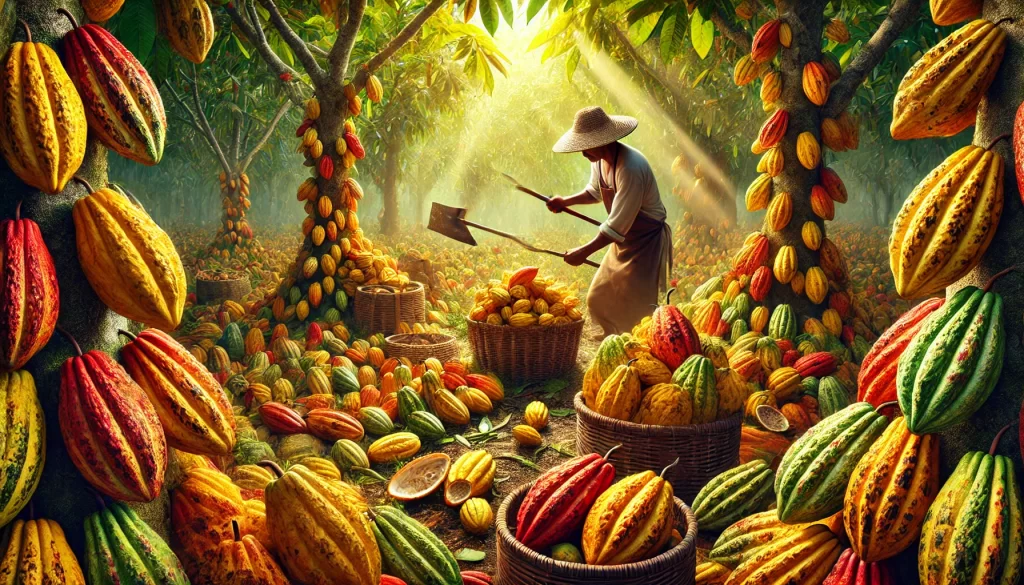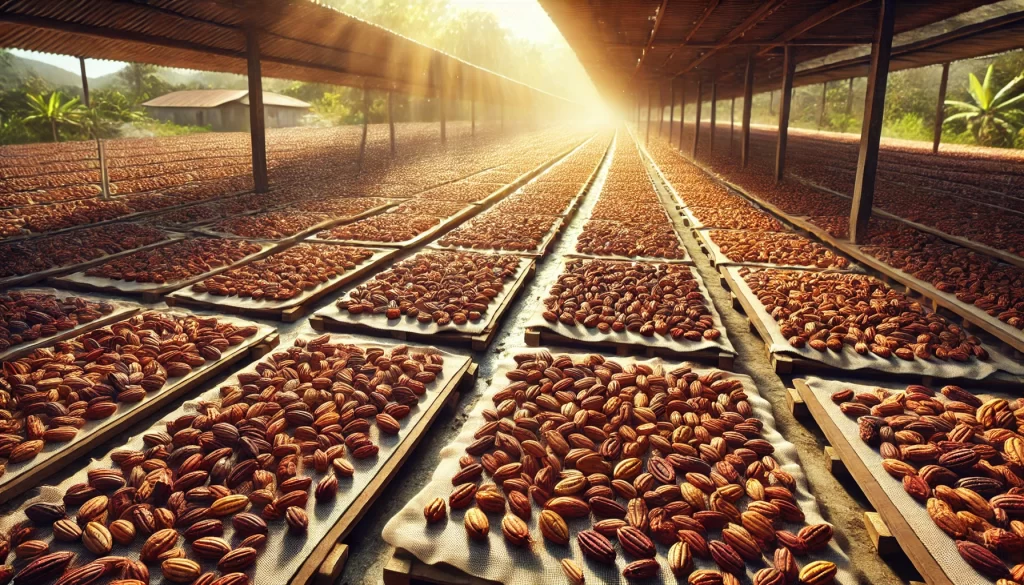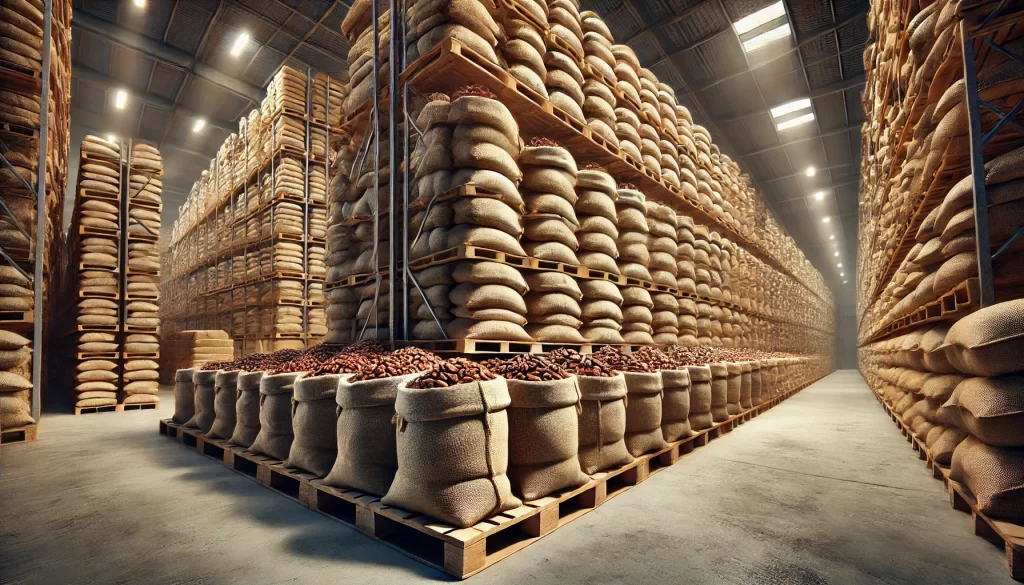Post-harvest management of cacao is a critical stage that determines the final quality of the beans and, therefore, their market value. From harvest to commercialization, each step requires meticulous attention to ensure that the final product meets the quality standards demanded by the chocolate industry and other derivatives. Below are the best practices in post-harvest management and effective strategies for cacao commercialization.

Cacao Harvest
Maturity Indicators
Cacao harvesting should be done when the pods have reached full maturity. The signs of maturity include:
- Color Change: Depending on the variety, the pods change from green to yellow, orange, or red.
- Sound When Tapped: When the pod is gently tapped, it produces a hollow sound, indicating that the beans are fully formed.

Harvesting Techniques
Cacao harvesting is done manually to avoid damaging the pods and trees. Common tools include machetes or pruning shears. It is crucial to cut the pods at their base without damaging the floral cushion, which could affect future production.
Post-Harvest Processing
Fermentation
Fermentation is a key process that develops the flavor precursors in cacao beans. This process also removes the mucilaginous pulp surrounding the beans and reduces astringency.

- Fermentation Methods:
- Box Fermentation: Opened pods are placed in wooden boxes in layers, covered with banana leaves. The process lasts 5 to 7 days, depending on weather conditions.
- Heap Fermentation: The beans are piled on the ground and covered with leaves, turning them regularly to ensure even fermentation.
- Temperature Control: During fermentation, the internal temperature of the boxes can reach between 45°C and 50°C. Maintaining this temperature is essential to develop the desired flavors and prevent the growth of unwanted fungi.
Drying
Drying is crucial to reduce the moisture content of cacao beans to 6-7%, which is necessary for storage and transport.
- Sun Drying: This is the most traditional method, where the beans are spread out on patios or raised beds and exposed to the sun for 5 to 10 days. They must be turned regularly to ensure even drying and to avoid further fermentation.
- Mechanical Drying: In climates with high humidity, mechanical dryers can be used to control the temperature and drying speed, ensuring the beans do not overheat and lose quality.

Sorting and Storage
Once dried, the beans are sorted to remove impurities, broken or defective beans, and are separated by quality.
- Manual Sorting: Involves visual inspection and removal of defective beans.
- Mechanical Sorting: Sieves and blowers are used to separate beans by size and weight.
Storage
Dried beans must be stored under conditions that prevent moisture absorption, pest infestation, and contamination.
- Sack Storage: Jute or polypropylene sacks are used, allowing air circulation.
- Storage Conditions: Warehouses should be cool, dry, and well-ventilated, with temperatures maintained between 18°C and 24°C and a relative humidity below 65%.

Cacao Commercialization
Quality and Standards
The quality of cacao is determined by several factors, including uniform bean size, absence of defects, aroma, and cocoa butter content. Meeting quality standards is crucial for accessing premium markets.
- Certifications: Obtaining certifications such as Fair Trade, Rainforest Alliance, or organic cacao can increase the value of cacao in the international market.
- Traceability: Maintaining detailed records from harvest to commercialization ensures product traceability, which is valued by buyers seeking sustainable and ethically sourced products.

Commercialization Channels
Cacao is marketed through various channels, each with its own requirements and advantages.
- Local Market: Producers can sell their cacao to cooperatives or local intermediaries who in turn sell it to exporters or local processors.
- Direct Export: Producers handling larger volumes and meeting quality standards can export directly to chocolate manufacturers or through trading houses.
- Sale to Processors: Some producers opt to sell their cacao to companies that process the beans into finished products like cocoa liquor, cocoa butter, or cocoa powder.
Value-Added Strategies
To maximize income, some producers choose to add value to their cacao before sale.
- On-Farm Processing: Some farmers process their cacao into liquor, butter, or cocoa powder, allowing them to capture greater added value.
- Own Brand: Creating a single-origin chocolate brand can open opportunities in niche markets that value the product’s story and quality.

International Market
The international cacao market is dominated by a small number of producing and buying countries. However, fluctuations in cacao prices in global markets can significantly impact producers.
- Futures Contracts: Some producers use futures contracts to lock in the selling prices of their cacao, protecting themselves from market fluctuations.
- New Markets: Exploring emerging markets, such as Southeast Asia or the growing demand in China, can offer new opportunities for cacao commercialization.
 AgronoBlog – Agriculture Blog
AgronoBlog – Agriculture Blog 


